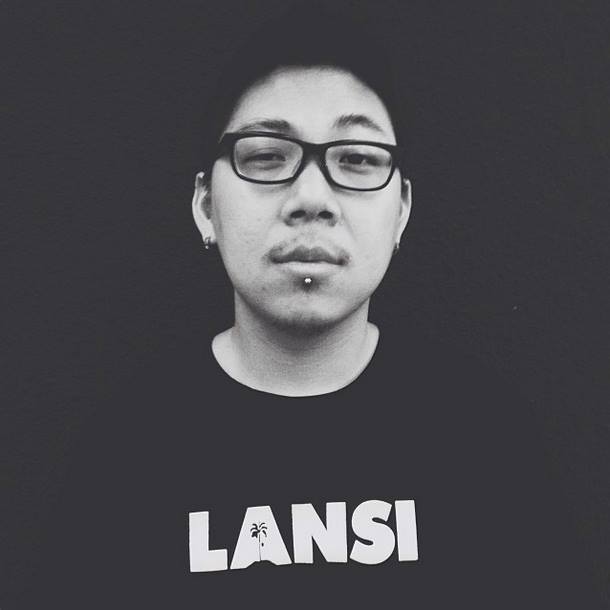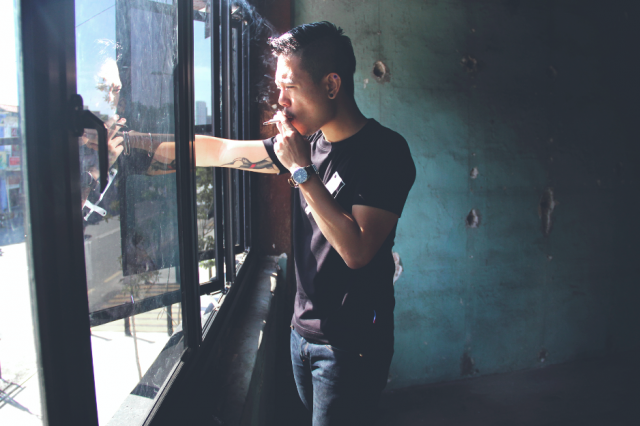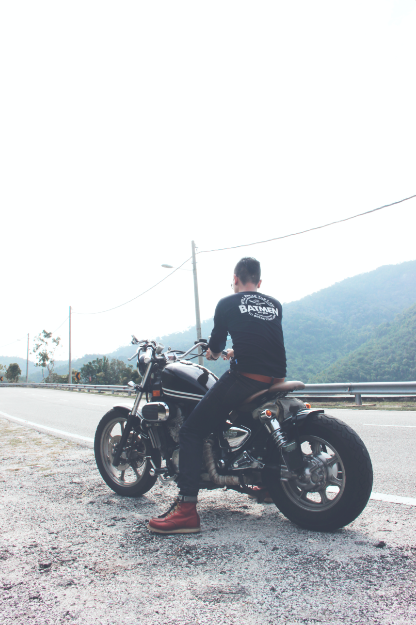
The world is too wide for just a few streetwear brands to remain supreme. Brands with an established history and a heritage have sprung up all over the globe and we’d like to take this opportunity to get to know each and everyone that comes our way. Let’s start with our Southeast Asian neighbors in Malaysia, The Swagger Salon.
Now before The Swagger Salon ever grew into what it is today, let’s go to when founder Yung Shen began dabbling in design in 2007 when he bought a black and white trucker cap, and customizing it with his signature tag, LANSI, which means ‘cocky’ or ‘arrogant’.

From here, Shen began more dabbling and designing, finally producing his first line of LANSI fitted caps. With no local shops interested in carrying the caps, Shen then decided to sell his wares online which by 2010 had gained a steady online following. It was here that Shen and two of his buddies, Jason and Jian, decided to build what is known today as The Swagger Salon.
With more than a few brands under The Swagger Salon, Yung Shen and his band of brothers show no signs of stopping. And why would they?
Take a peek into the brand and into the Malaysian streetwear scene through the eyes of this base brand, The Swagger Salon.
Besides hip-hop, rap music, and graffiti, who/what else influenced you enough to decide to put up The Swagger Salon?
In terms of streetwear influences, people like Johnny Cupcakes and Benny Gold really inspired and spurred us to start our clothing brand. And the notorious FRONT Magazine taught us a thing or two about shooting our lookbooks.
Who comes up with the designs, what are they based on, any underlying themes in each collection/release?
There are a couple of different labels under The Swagger Salon umbrella. LANSI, our flagship brand, has always been an attitude brand revolving around arrogance and cockiness (the original definition of the word LANSI in our local dialect).


Whereas TAIKOR is a male-centric line with an edgier and grittier appeal, and The Swagger Salon’s own range of basics focuses more on the aesthetics of cut-and-sew apparel. As the Creative Director, I handle the creative processes and all the designs. Being a copywriter by profession, I’d start each collection with a tagline — e.g. “Second To None”, “Rage Against The Average”, etc. and the designs for the collection will be developed around that particular theme.



What was your favorite collection/release so far, and why?
Definitely our most recent release — “No Room For Rookies”, because we believe that a clothing brand is only as good as its latest collection. We are supposed to be trendsetters, after all.

If you could collaborate with any music or art icon, who would it be, and why?
Banksy. Because Banksy.
What would be one thing you would like to accomplish with The Swagger Salon that you haven’t yet?
Drop an item that hits 5-figure bids on eBay! Hah! But while we’ve had a couple of milestones that we were more than happy to have met, there certainly are lots more we look forward to. Be it collabs with brands we grew up with, or global domination, or having our logo emblazoned across Manny Pacquiao’s shorts, these are the things we look forward to happening and it gives us the exhilaration and enthusiasm like as though we just got started — even though we’ve already sold thousands of caps and T-shirts!
Let’s talk a little bit about the scene in Malaysia. How big or small is the streetwear culture on your side of the world?
I remember when the term “streetwear” started becoming a thing here in Malaysia, back in 2005/2006 (might’ve been earlier, as we were much younger then LOL) — as hip-hop brands such as FUBU, Phat Farm, LRG etc started losing their appeal, and Supreme, The Hundreds, Clot, Neighbourhood etc became more in demand. However back then in Malaysia, streetwear was still pretty much a tiny niche market for the rich kids, mostly sneakerheads, lurking on online forums showing off the kicks they copped and what they were rocking for the day (that’s #OOTD-ing before Instagram came about!). Then came the rise of local streetwear brands, circa 2010. We were fortunate to be at the forefront alongside Tarik Jeans, Monarchii, Pestle & Mortar, Abstrax, The Super Sunday and the rest. Suddenly, we were seeing a surge in support for local clothing. Suddenly streetwear became a mainstream trend. Suddenly every one started rocking snapbacks. While one can argue that it was more about Malaysians showing support for homegrown clothing brands rather than the streetwear culture itself, it certainly did grow the streetwear game substantially here in Malaysia and brought us to greater heights. I mean, we even had the very first South-East Asian Stussy Chapter Store open in KL!
Although it is yet to be seen whether Malaysian streetwear brands can actually make it on an international level, it’s good to know that there are local brands that have managed to grow beyond being just an aficionado’s hobby or a part-time thing. Some brands have grown to become proper businesses with flagships and offices all within the span of a few recent years. So I guess you can say the streetwear market here is thriving, and long may it continue.

How much competition in your local scene is out there and what can you say about it?
There are so many local clothing brands emerging here in Malaysia every day that we’ve pretty much gave up keeping track on other brands. However, competition is one of the few things that we don’t really care about as a brand. While we do peep what other local brands are doing or dropping from time to time, we rather spend our time focusing on doing our own thing, putting out the best we can do and keep on elevating.
What’s the biggest challenge in your local streetwear scene that you think is the hardest to overcome?
Piracy. They say you know you’ve made it when the pirates bootlegged your stuff. But we say it’s a pain in the ass when piracy has become such a norm in your culture that when it hits a homegrown brand, you can’t help but feel helpless as there isn’t much you can do against counterfeit kingpins. With piracy being the norm and having such lackadaisical enforcement by the authorities, having your brand bootlegged is the ultimate bittersweet sensation.
What’s the current streetwear trend right now that you simply don’t understand or would never try?
HBA-esque white boxes on black t-shirts. It’s just like the Supreme box logo — it only works on a Supreme t-shirt. The moment you slap a big white square on a black t-shirt, people are gonna think HBA and not your brand — regardless of what you put in the box. To be fair, we’re guilty of doing the same thing as well — but it was only to poke fun at all those who jumped on the HBAndwagon.
Why are all your models women?
Because we love our women. HAH! We actually do feature male models as well (for our male-centric TAIKOR brand), but we all know both guys AND girls love looking at attractive women, so it’s a win-win situation for all. We’re like an eye-candy store.




Are you familiar with any Filipino celebrities/models? If so, would you get her to model for you guys?
MISA CAMPO. Although technically she’s not from the Philippines, she is half-Filipino. And we’d kill to have her in our pants clothing for a shoot. Otherwise, Marian Rivera would work as well. Heh.
Check out The Swagger Salon and all their wares at www.theswaggersalon.com
Follow The Swagger Salon on:
Facebook: facebook.com/theswaggersalon
Instagram: @theswaggersalon
Twitter: @theswaggersalon


